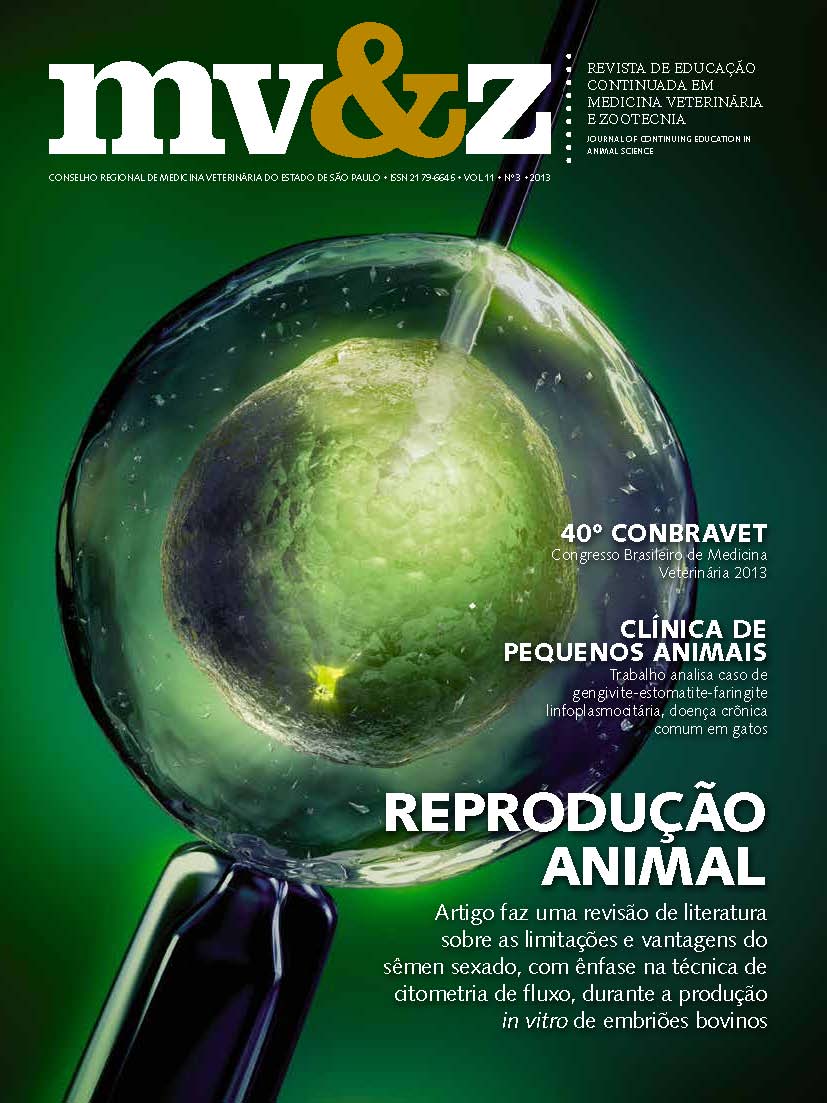Deficiency in the humoral immune response to vaccine rabies virus in domestic dogs prime vaccinated
Conteúdo do artigo principal
Resumo
Epizooties (OIE) consider as being the reference status of protection against
rabies titers of virus neutralizing antibodies (VNA) = 0.5 IU/mL to maintain
a protective immune response in animals. The aim of this study was to evaluate,
according to age, race and period of vaccination and blood collection,
the immune response in dogs prime vaccinated with rabies cell culture vaccine.
Based on request forms, 432 samples of animals received at the Pasteur
Institute of Sao Paulo at the period of 2009 to 2011, those receiving a single
dose of vaccine by the time of blood collection were analyzed. We evaluated
the information on age, race and period of vaccination until to blood collection.
The evaluation of VNA to rabies virus was performed by Rapid Fluorescent
Inhibition Test (RFFITT). In this study, we considered animals with less
than 12 months as puppies and with over 12 months as adults. Of total samples
analyzed, 21.76% (94) had titers lt;0.5 IU/mL and among these, 63 (67.02%)
samples were puppies. When considering the interval between administration
of the vaccine and blood collection, 74 (60.63%) samples did not achieve
protective titers in the first six months interval between vaccination and test
showing a window period especially important in puppies. With regard to
race, there was no significant variation. It was concluded that the puppies are
more susceptible to infection by rabies virus than adults, proving the need for
a second dose of vaccine in the primary vaccination, which would increase the
possibility of a rapid, efficient and lasting immune response.
Detalhes do artigo
Seção
1. Autores mantém os direitos autorais e concedem à revista o direito de primeira publicação, com o trabalho licenciado sob a Creative Commons Atribuição-NãoComercial-SemDerivações 4.0 Internacional
2. Autores têm autorização para assumir contratos adicionais separadamente, para distribuição não-exclusica da versão do trabalho publicada nesta revista (ex.: publicar em repositório institucional ou como capítulo de livro), com reconhecimento de autoria e publicação inicial nesta revista.
3. Autores têm permissão e são estimulados a publicar e distribuir seu trabalho online (ex.: em repositórios instituicionais ou na sua página pessoal) a qualquer ponto antes ou durante o processo editorial, já que isso pode gerar alterações produtivas, bem como aumentar o impacto e a citação do trabalho publicado (Veja O Efeito do Acesso Livre);
